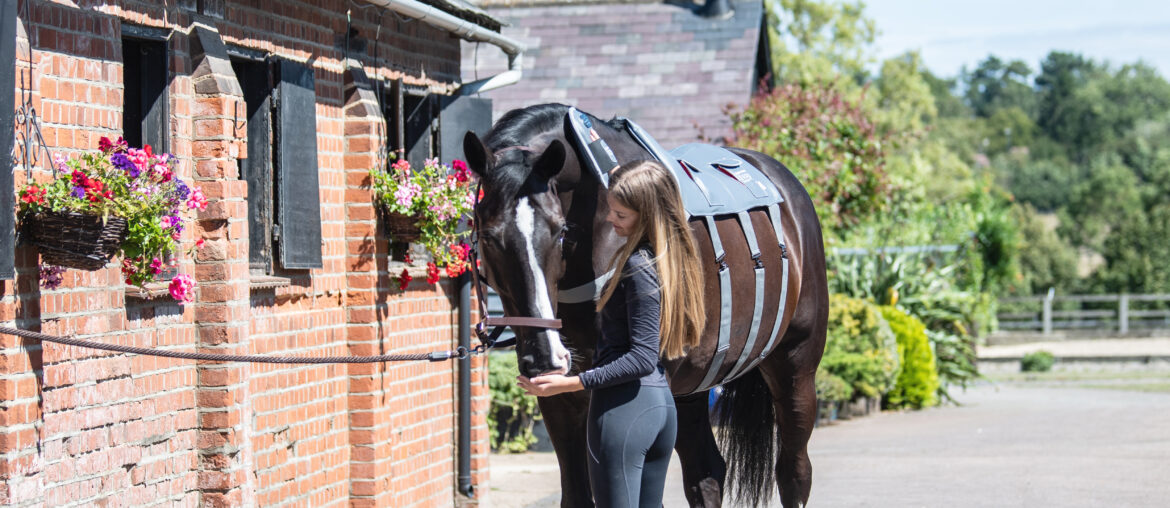Part four in the series, this week focuses on routine health care
How can you tell if your horse has worms? Westgate Labs explain…
The most obvious way we can tell if a horse has worms is by seeing them in the droppings, but even in a horse with a high burden it’s still quite unusual to see these. They are more likely to appear following a worming treatment or under times of stress such as travelling or at competitions when diarrhoea or loose droppings can dislodge the worms from the gut. These are not to be mistaken for seeds, fly eggs, grubs and maggots that can all be confused for horse parasites in the dung!
Usually there has to be large numbers of parasites present before the horse shows physical signs by which time there is often damage to the horse’s internal organs. Although adult worms live mainly in the intestinal tract, the larval stages of some species can migrate through the body to damage the intestinal walls, lungs, arteries and other organs of the horse. High infections can give a horse a pot-belly, make its coat look dull or cause it to lose weight. We might see that the horse is unwell with a cough, colic or discomfort in its abdomen or anaemia from blood loss can cause lethargy or poor growth rates in youngsters. Conversely many are common to other illnesses so seeing any of these symptoms is not definitive of a parasite burden that needs treatment.
How beneficial is testing for worms?
Targeted worming saves giving unnecessary chemicals while helping to identify potential problems where treatment/management isn’t being effective. “Faecal egg counts can be used to identify the likely 15-20% of horses that need worming and can reduce wormer use by up to 82%” (Lester & Matthews, 2013). “Fewer than 27% of horses Equisal tested require treatment for tapeworm” (Austin Davis Biologics, 2018). The most reliable way of finding out if a horse has worms is to test for them in the laboratory. The type and frequency of testing is based on the life cycle of the worms, the time of year and the immune status of the horse – young, old and ill horses need more support.
Can you imagine no longer being able to graze your fields because of un-treatable parasite burdens?
The threat is real but it’s not too late to slow down the development of resistance, but we must act now. Once it’s present and worms no longer respond to treatment there is no going back. It’s the parasites on the land that develop the resistance and they never regain their sensitivity to the worming chemicals. The only way out once it’s advanced is either not to graze the fields or to devise new treatments that are effective. As there are no new wormers on the horizon for horses we must do all we can to fiercely protect the chemicals we have and slow resistance as much as possible. There’s no place for full chemical worming programmes any more, testing forms the basis of a worm control programme, adding in treatments only where necessary.
Did you know that a foal can get used to having its feet handled within a few days of its birth?
It’s helpful to habituate and desensitise your horse from a young age to become used to having its feet picked. This is something that can be imprinted on a foal within a few days of its birth. The amount of time the feet are held can be increased from a matter of seconds to minutes whether as a foal, young or mature horse and should include taking the feet forward in the normal ‘farrier’ position. It may be useful to have assistance if it’s a young or nervous horse. It’s helpful when picking up feet to lightly knock them with a hoof pick to replicate a shoe being nailed on or feet being trimmed, a young horse may benefit being in close proximity to horses being hot shod in order to acclimatise them to the presence of smoke and to understand that this is not a reason to panic.
Do you know the best way to prepare for your farrier’s visit?
- It is important to settle your horse beforehand. This could mean placing it in the stable some time before your appointment and in some cases, a companion horse should be kept close to hand.
- Horses should be clean and dry as farriery tools are designed to cut dry hooves. Wet feet/legs make it difficult to trim and shoe the horse.
- A suitable environment should be provided such as clean, dry standing with good light and a non-slip surface. The shoeing area should be accessible by van.
- It’s preferable that a horse is not fed or given a haynet while being shod as this can be a distraction and a horse eating off the floor will struggle to balance on three feet.
Do you know which plants are poisonous to our horses and ponies?
- Bracken
- Buttercup
- Clover
- Deadly Nightshade
- Foxglove
- Laburnum
- Linseed
- Horsetail
- Oak/Acorn
- Ragwort
- Sycamore
- St Johns Wort
- Yew


